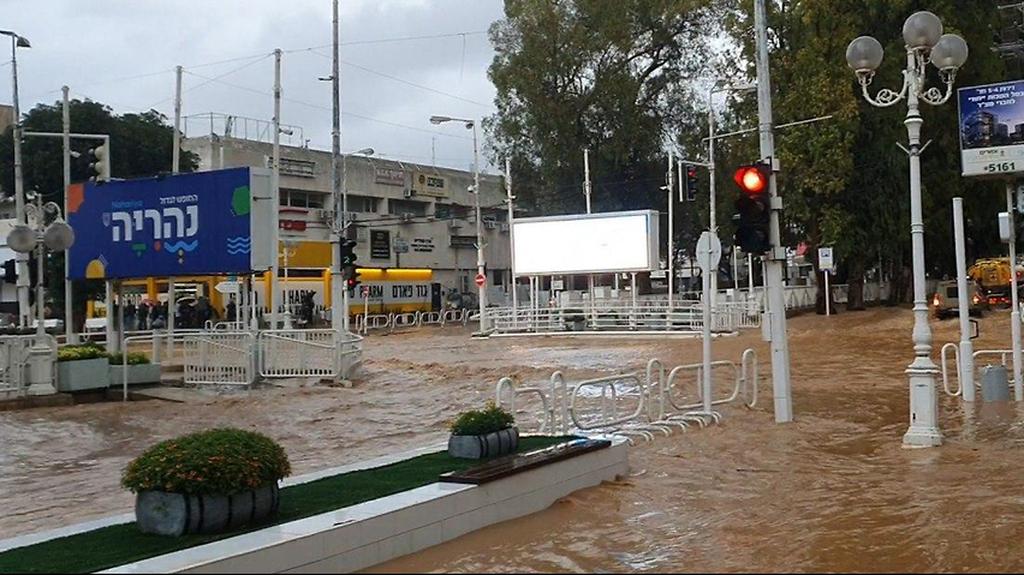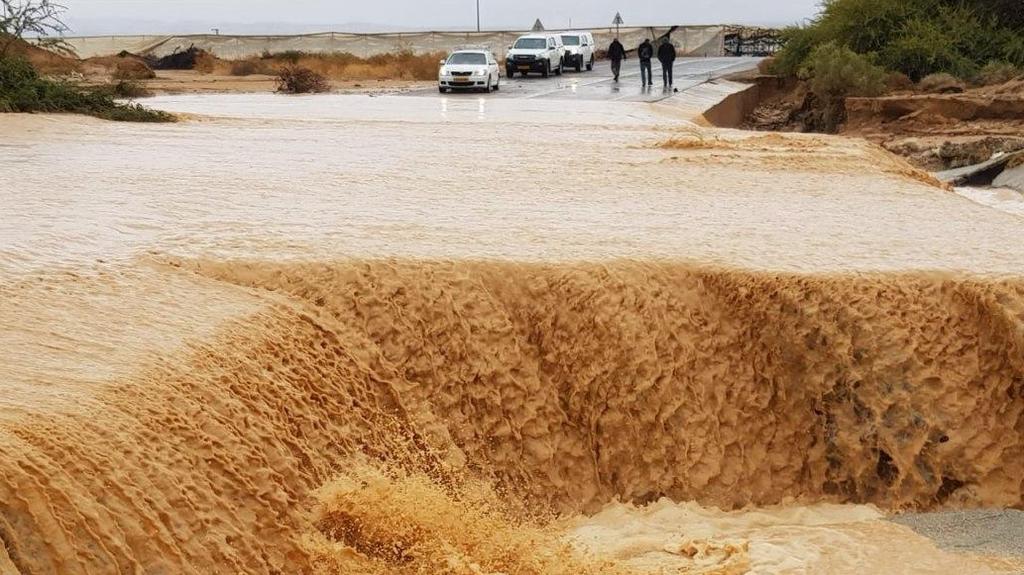Heavy rainfall across Israel over the winter exceeded the annual average by 105%, according to a report published this week by the head of the Israel Meteorologist Service's Climate Department Dr. Amos Porat.
During the rainy season (primarily December and January) areas in the north such as the Carmel Coast, Hula Valley and Menashe Heights all experienced large amounts of rain that exceeded the seasonal average by more than 120%.
Nahariya, also in the north, topped the charts with approximately 140% more than the average rainfall for the time of year.
The infrastructure in many cities was unable to cope with the sudden, heavy downpours, leaving multiple urban across the country massively flooded, including Tel Aviv, Nahariya and Ashdod.
A number of people drowned in the floods, including a couple trapped in a Tel Aviv elevator as floodwater poured in and a man in his 30s who was swept away while trying to rescue people from an overturned car in Nahariya.
An Israel Air Force base in southern Israel also flooded, damaging several fighter jets and other equipment and causing millions of dollars in damage.
3 View gallery


An IAF fighter jet sits in a flooded hangar at Hatzor airbase in southern Israel in January
In the West Bank, the amount of rainfall for the season also surpassed the average, albeit by a slightly lower 110-130%.
The northern Negev, which has suffered a deficit of rainwater in recent years, saw rainfall return to the expected average for the south and for the season.
While December and January were rainier than average, February was a little drier, with just 60-80% of the expected amount of rainfall in northern Israel, the Jordan Valley and the Coastal Plain.
In the Galilee and the northern Golan Heights, 120-150 mm of rainwater fell, which constitutes 70-80% of the monthly average for February.
The Sea of Galilee also saw lower than average rainfall in February, reaching only 60-70% of the average, while the Jordan Valley saw 50-80% of its expected rainfall.
Even so, the lake had a very successful winter in terms of replenishing its levels, and now stands at 209.61 meters below sea level and less than a meter below full capacity.
In contrast, the southern and central regions saw an increase in rainfall that surpassed the average for the usually drier February.
In the Gush Etzion settlement bloc south of Jerusalem, the amount of rainfall exceeded the average, reaching 120-140% of the predicted monthly amount.
In areas close to the Gaza border, the amount of rainfall exceeded the average by 110-150%, while in the Negev and the Arava, the amount of rainfall reached 30-50mm, quantities that exceed the monthly average by a considerable amount.



